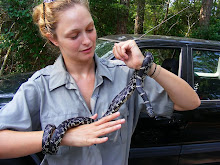You can track the progress of the wildfires, these and the Californian ones, on InciWeb.
Published on Monday, July 14, 2008
“Southern forests need fire in the same way that rain forests need rain.”
This was a favorite expression of Larry Landers, director of research at Tall Timbers Research Station in Florida. Larry spoke a truth that we in North Carolina continue to ignore at our peril: Our forests are fire-dependent. That is, they have evolved to be flammable, and require frequent fire for their very existence.
What we are seeing now in Pocosin Lakes National Wildlife Refuge and the Dismal Swamp are examples of costly and dangerous after-the-fact responses to large-scale wildfires.
Our current tendency is to suppress fire, but when fire suppression is coupled with unwise development, it inevitably leads to greater destruction in both human and ecological terms. Meanwhile, excluding fire from fire-evolved areas leads to the “shading out” of hundreds of understory plants and loss of habitat for the animals that depend on them. At the same time, pine needles and dead, fire-ready materials accumulate on the forest floor in place of a living understory.
Before the advent of modern fire-suppression techniques, lightning strikes would introduce fires to the coastal and central South every one to three years. These frequent fires would thin and regenerate the trees, consume fuel loads on the ground and stimulate seed production of understory plants.
In the modern, densely settled landscape, the vast majority of naturally occurring fires are quickly put out. With the long-term buildup of tinder on the forest floor, fires that do reach any size tend to burn at the canopy level and are vastly more difficult to control. These over-story burns endanger people, property, houses and negatively impact air quality for miles around.
With North Carolina’s population set to double in the next 50 years, we urgently need to take sensible steps to reconcile the need for our forests to burn with the desires of North Carolinians to live in safety and comfort. Consider the following three proposals.
First, we need many more frequent controlled burns, otherwise known as “prescribed fires,” as an alternative to the policy of after-the-fact suppression of wildfires. North Carolina's State Forest Service, rather than the governor’s office, should determine when burning bans should be enacted and when they should be lifted. Too often, the decision to impose a burning ban is influenced more by popular opinion than by an informed balancing of risk reduction and habitat restoration. Such a transfer of decision-making power would make North Carolina’s fire management more like the rest of the South’s.
Second, people who settle in this region should be encouraged to do so in a “Firewise” manner. For example, home insurance rates could be set at a much lower rate for houses built with metal roofs and bare-ground yards (as was popular in the old South) than conventional houses built with flammable materials and surrounded by grass lawns (which only act as tinder). In fire-prone areas, new buildings that do not conform to “Firewise” standards should be denied building permits.
With out-of-staters relocating to North Carolina in record numbers, we will soon have living here a large group of people who do not remember how the land was once managed with fire and have no context for understanding it. Proper economic incentives will produce the safest kind of development.
Third, burning bans that are in place need separate categories to distinguish yard-waste and trash burns from habitat burns. In this way, national parks and state-owned game lands can still use their fire crews and burn responsibly during drier, more wildfire-prone times, while yard-waste burns, which are not usually attended by fire crews and fire-fighting equipment, are postponed.
With responsible fire management and “Firewise” development, we can help protect our state’s natural beauty and biological diversity along with the lives and property of its human residents.




2 comments:
The California wildfires offer a view of North Carolina's possible future. Here, fire suppression has enabled the accumulation of so much fuel that, as you say, the fires burn hotter and fiercer. Trees which would be able to survive normal fires now succumb to these megafires, and the result can be utter devastation.
This is a lesson that California STILL cannot learn. The real estate industry, along with ignorance in the state government and the AQMD are mostly to blame. Doesn't help that the state is also overcrowded. Good article!
Post a Comment